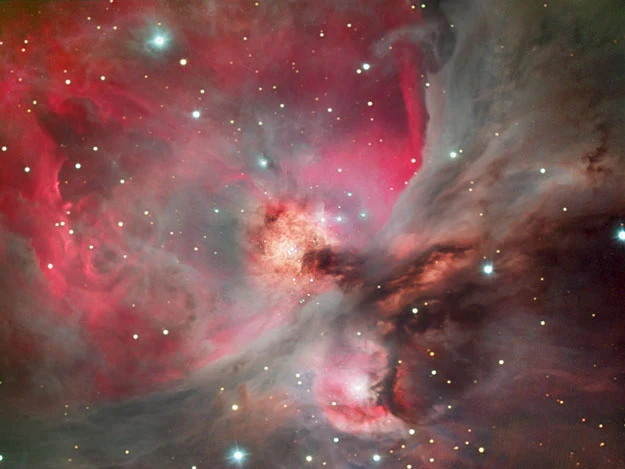The video, published by NASA this week, shows the well-known Orion Nebula from a new angle. 3D-visualization of the nebula allows the beholder to see the newborn stars, gas and dust of the nebula from a bird’s eye view.
“To be able to fly through the nebula mosaic in three dimensions – to understand how the universe really looks,” says Frank Summers, a visualization specialist.
Visualization includes photographs taken by the Hubble and Spitzer space telescopes, according to NASA. Scientists then selected frames to create a better interpretation of how the nebula can look from the inside out.
The video accommodates images in both visible light and infrared, giving a three-minute clip a color depth and recreating the nebula structure that is located in the Orion belt.
The nebula is 1350 light years from Earth, and it’s a good example of a place similar to where our Sun was born 4.6 billion years ago, according to NASA.
Nebulae are 2 million years old, and its stars are young. This means that we have plenty of time to learn about their development and potential future.
“To be able to fly through the nebula mosaic in three dimensions – to understand how the universe really looks,” says Frank Summers, a visualization specialist.
Visualization includes photographs taken by the Hubble and Spitzer space telescopes, according to NASA. Scientists then selected frames to create a better interpretation of how the nebula can look from the inside out.
The video accommodates images in both visible light and infrared, giving a three-minute clip a color depth and recreating the nebula structure that is located in the Orion belt.
The nebula is 1350 light years from Earth, and it’s a good example of a place similar to where our Sun was born 4.6 billion years ago, according to NASA.
Nebulae are 2 million years old, and its stars are young. This means that we have plenty of time to learn about their development and potential future.
Tags
Space
